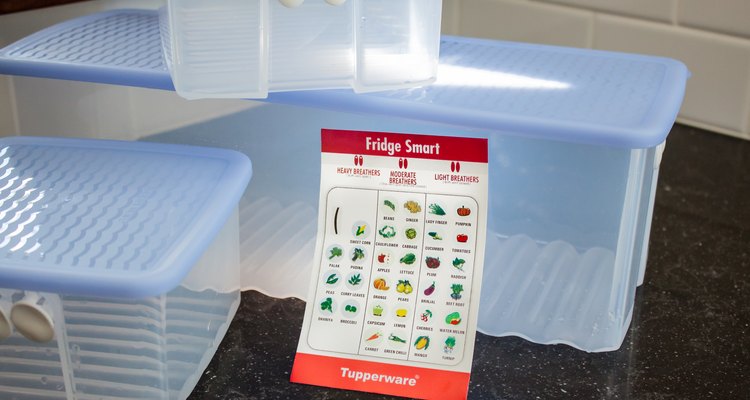
Tupperware has sold Americans plastic storage containers for decades. Its plastic containers have a patented “burp," which signals that air has been removed from the container, helping the food inside stay fresh longer. Tupperware's FridgeSmart containers have an airflow valve that lets air circulate in the container. This airflow, or venting, helps some fruits and vegetables to stay fresh longer. Tupperware's newer containers feature instructions printed on the side of the containers, but the older products came with printed instructions. If you lost these, you might not remember how the containers have to be used for them to work properly.
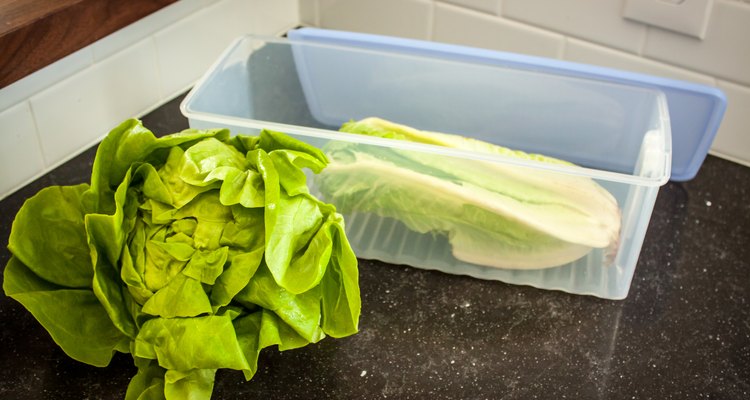
Choose a container that's larger than the fruits or vegetables you want to store. The line's largest Medium Deep size should be large enough to store a head of lettuce.
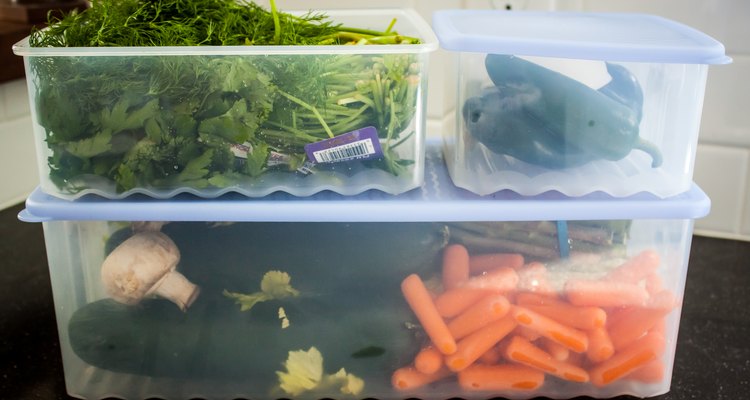
Fill the container with fruits or vegetables, using items that are the same or similar. Tupperware divides fruits and vegetables into different categories: "high breathers," "medium breathers" and "low breathers." If you have several fruits listed as "low breathers," sore those together in one container.
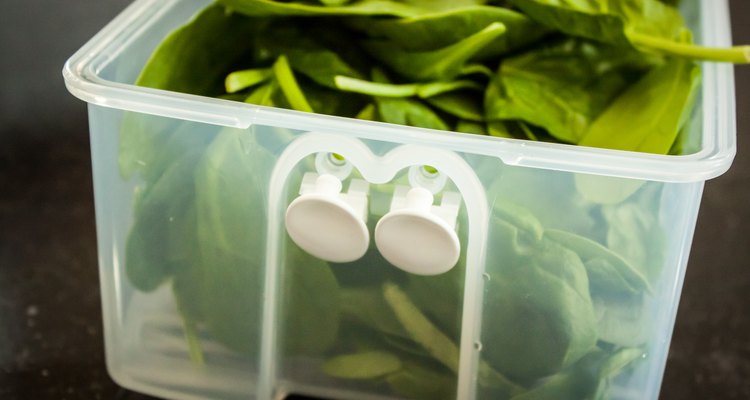
Open both vents on the container if you’re storing "high breathers" inside. "High breathers" include spinach, endive, artichokes, Brussels sprouts, sweet corn, broccoli and peas of all varieties. Move the container into the refrigerator as soon as you fill it and open the vents.
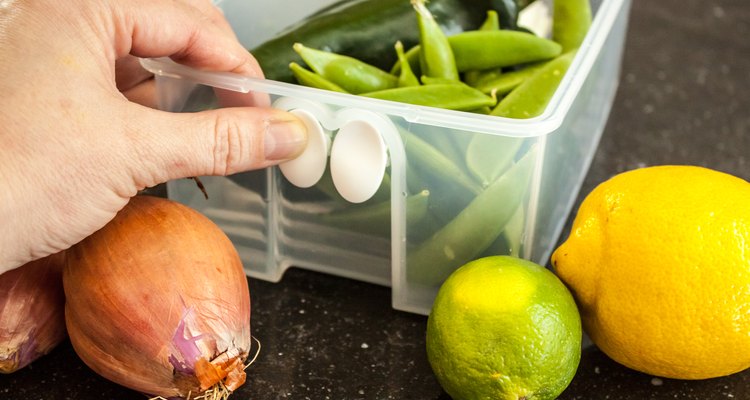
Press one valve on the container to ensure it’s closed and then open the opposite vent for "medium breathers." Tupperware considers string beans, snap beans, any type of fresh beans, cauliflower, herbs, shallots, cabbage and green onions to be "medium breathers." Lettuce, fresh greens and leeks are also "medium breathers." Medium-breather fruits include pears, peppers oranges, lemons, limes and apples.
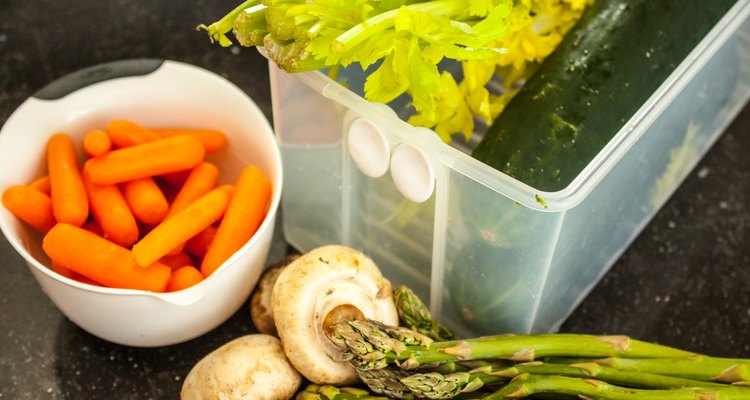
Close both vents for any "low-breather" foods, such as beets, mushrooms, celery, radishes, turnips and okra. Zucchini, rutabaga, celery, carrots, cucumbers and asparagus are also "low breathers." Tupperware also suggests storing berries, ripe fruits and chopped or cut fruits in containers with the vents closed.
Related Articles

How to Store Clothes in Cardboard Boxes
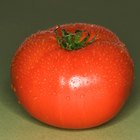
How to Blanch, Peel, & Freeze Whole ...

Instructions for a Cosco High Chair

How to Store Raw Peanuts

How to Find a Prison Inmate in ...

Rival Seal-a-Meal Vacuum Food Sealer ...

How to Grate Beetroot

Can You Freeze Canned Goods?

How to Store Potatoes for the Long Term

How to Freeze Spinach

How to Preserve Rutabagas

How Long Can I Keep Food Safe in a ...
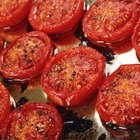
How to Grill Tomatoes on a Stove
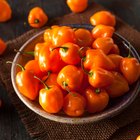
How to Roast & Freeze Habanero and ...

How to Take Care of a Vera Bradley ...

How to Prevent Bananas From Browning ...

How to Freeze Croissants
How to Preserve Kohlrabi

How to Package Cupcakes for Shipping

Is It Safe to Cook Vegetables in ...
References
Writer Bio
Jennifer Eblin has been a full-time freelance writer since 2006. Her work has appeared on several websites, including Tool Box Tales and Zonder. Eblin received a master's degree in historic preservation from the Savannah College of Art and Design.
Photo Credits
Brad Jones/Demand Media